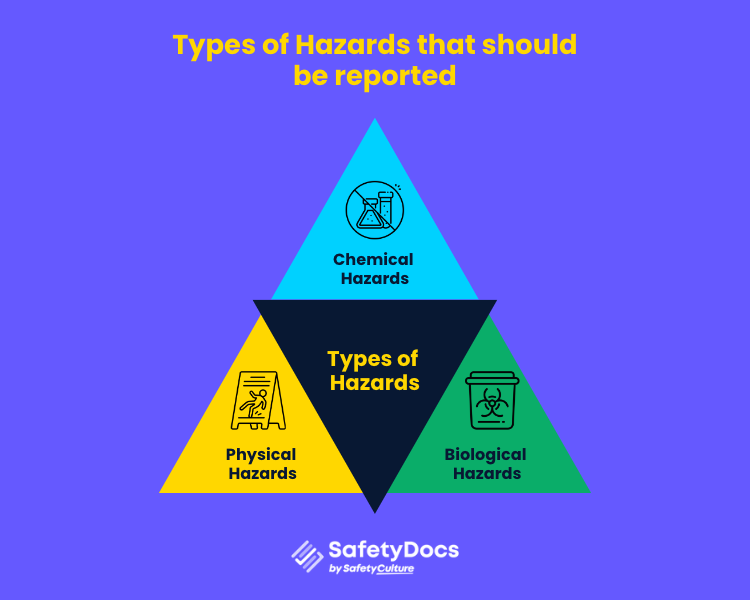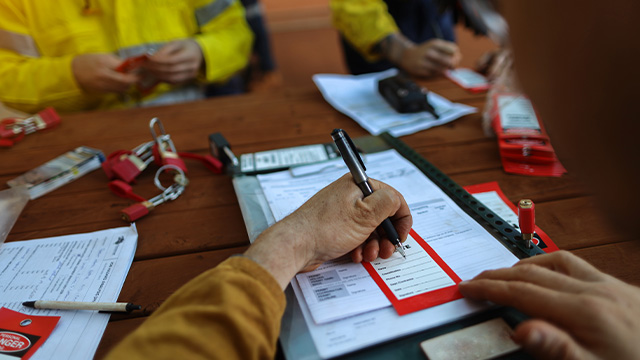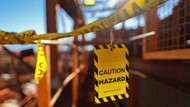Workplace health and safety is a critical concern for all Australian employers and employees. A key aspect of maintaining a safe and healthy workplace is to implement hazard reporting, which involves identifying and reporting potential hazards in the workplace that could cause harm to workers or visitors. Hazard reporting is an essential part of WHS, as it allows employers and workers to take proactive measures to prevent accidents and injuries from occurring.
This post will discuss the legal requirements for hazard and incident reporting in Australia, the types of hazards that should be reported, how to report hazards and safety incidents effectively, and common barriers to effective reporting. By following the guidance provided in this post, employers and workers can help to create a safer and healthier workplace for everyone.
Understanding Hazards
Understanding hazards in the workplace is crucial for maintaining a safe and healthy environment. Hazards can come in many forms, and recognising them is the first step in preventing accidents and injuries.
Legal requirements for hazard reporting in Australia
The Work Health and Safety Act 2011 (WHS Act) sets out the legislative framework for WHS in Australia. The WHS Act sets out the duties of employers, workers, and other parties in relation to workplace health and safety. It also establishes the legal requirements for incident reporting and investigation.
Under the WHS Act, employers have a legal duty to provide their employees with a safe and healthy workplace and to take reasonable steps to ensure that others, such as visitors and contractors, are not put at risk. Employers must also provide employees with information, training, and supervision to ensure they can work safely. One of the key ways that employers can fulfil these obligations is by establishing and maintaining an effective hazard and incident reporting system.
Workers also have legal duties under the WHS Act, including taking reasonable care for their own health and safety, cooperating with their employer to ensure a safe workplace, and reporting hazards and incidents as soon as possible. Workers are required to report any hazards they become aware of during their work and to take appropriate action to avoid or minimise any associated risks. Employees should report hazards to the safety department as part of a structured hazard reporting program.
What happens when an organisation is non-compliant?
Penalties for non-compliance with the WHS Act can be severe, including fines and legal action. Employers and individuals can face fines of up to $3 million for a category 1 offence involving recklessness resulting in death or serious injury. Category 2 offences, which involve a failure to comply with a health and safety duty and can result in death or serious injury, can result in fines of up to $1.5 million. Category 3 offences, which involve failing to comply with a health and safety duty and not resulting in death or serious injury, may carry a fine of up to $500,000.
In addition to these penalties, non-compliance with the WHS Act can damage a company's reputation, cause a loss of productivity, and decrease employee morale. Therefore, employers and workers must take hazard and incident reporting seriously and ensure that they are fulfilling their legal obligations under the WHS Act.

Types of hazards that should be reported
Many types of hazards can be present in a workplace, and employers and workers need to be able to identify and report them to maintain a safe and healthy working environment. Some common examples of hazards that should be reported include:
Physical hazards
These include slips, trips, and falls caused by hazards such as wet floors, uneven surfaces, or loose cables. Other physical hazards can include manual handling tasks that can cause strain or injury and exposure to noise, vibration, or radiation.
Chemical hazards
Such as exposure to toxic or hazardous substances, like asbestos, lead, or pesticides. Chemical hazards can cause serious health problems, such as respiratory issues, skin irritation, or even cancer.
Biological hazards
Include infectious diseases, such as COVID-19, as well as exposure to bacteria, viruses, or other pathogens. Biological hazards can be particularly dangerous in healthcare settings or in industries where workers may come into contact with animals or animal products.
Identifying hazards in the workplace is an important first step in ensuring workplace safety. Employers and workers can use a range of methods to identify hazards, such as conducting regular risk assessments, inspections, and consultations with workers. Risk assessments involve identifying hazards and assessing the risk level, then implementing control measures to reduce or eliminate that risk.
Inspections involve a physical examination of the workplace to identify hazards that may be present, while consultations with workers can help to identify hazards that may not be immediately apparent to management.
It is important to report hazards as soon as possible and not wait until an incident occurs. This allows employers and workers to take proactive measures to address the hazard and prevent accidents and injuries from occurring.
Reporting hazards also allows employers to identify any patterns or trends in hazards that may be present in the workplace and to take steps to address those underlying issues. By reporting hazards promptly, employers and workers can work together to create a safer and healthier working environment for everyone.
Creating a Hazard Reporting System
Creating a hazard reporting system is essential for organisations to identify and mitigate potential hazards in the workplace. A well-designed system should include the following elements:
- Clear Policies and Procedures: Develop a clear policy and procedure for reporting hazards, including who to report to, how to report, and what information to provide. This ensures that everyone in the organisation understands their role in maintaining workplace safety.
- Training and Education: Provide regular training and education to employees on hazard recognition, reporting, and control measures. This empowers workers to identify and report hazards effectively.
- Reporting Mechanisms: Establish a simple and accessible reporting mechanism, such as an online reporting system or a mobile app. This makes it easy for employees to report hazards promptly.
- Investigation and Follow-Up: Ensure that all reported hazards are investigated and followed up on in a timely manner. This involves identifying the root cause of the hazard and implementing control measures to prevent recurrence.
- Feedback and Recognition: Provide feedback and recognition to employees who report hazards. This encourages a strong safety culture and motivates workers to continue reporting hazards.
By implementing these elements, organisations can create an effective hazard reporting system that promotes workplace safety and health.
How to report hazards
Reporting hazards in the workplace is an important part of maintaining a safe and healthy working environment. When employees report incidents and hazards promptly, employers and workers can take proactive measures to address them and prevent accidents and injuries from occurring. Here are some steps that can be followed when reporting hazards in the workplace:
Step 1: Identify the hazard
The first step in reporting a hazard is to identify it. This can be done through regular risk assessments, inspections, and consultations with workers. The appropriate person should be notified as soon as possible after a hazard has been identified.
Step 2: Determine whom to report to
The next step is to determine whom to report the hazard to. This will depend on the workplace and the reporting procedures that are in place. In some cases, hazards may be reported directly to a supervisor or manager, while in others, a designated WHS representative or committee may be responsible for hazard reporting.
Step 3: Report the hazard
Providing as much detail as possible about the hazard and its location is important when reporting a hazard. This may include a description of the hazard, the potential consequences of the hazard, and any other relevant information. Hazard reports can be made verbally or in writing, depending on the workplace and the reporting procedures that are in place.
Step 4: Ensure clear communication
Clear communication is key when reporting hazards. It is critical to ensure that the recipient understands the report and that any questions or concerns are addressed promptly. If the report is made in writing, it should be clear and concise, and any technical terms should be explained.
Step 5: Follow up on the report
Once a hazard has been reported, it is important to follow up on the report to ensure that action is taken to address the hazard. This may involve investigating the cause of the hazard and implementing controls to prevent a recurrence. It is important to keep the person who reported the hazard informed of any action taken and to ensure that any feedback or suggestions are considered.

Examples of reporting systems
There are many different reporting systems that can be used in the workplace to report hazards. Some examples include:
- Online reporting tools: Many workplaces have online reporting tools like that allow hazards to be reported quickly and easily. Online reporting tools like the SafetyCulture app can greatly benefit workplaces by providing a streamlined process for employees to report hazards quickly and easily. The app's user-friendly interface and mobile accessibility allow employees to report safety concerns in real time, providing supervisors and safety teams with immediate access to critical information.
- Hazard report forms: hazard report forms can be used to report hazards, accidents, and near misses. These forms may be available in hard copy or online and can be used to provide details about the hazard, its location, and any other relevant information.
- Hazard registers: hazard registers can be used to record and track hazards reported in the workplace. These registers may include details about the hazard, the date it was reported, and any action that has been taken to address it.
The importance of following up
Following up on hazard reports is important to ensure that action is taken to address the hazard and prevent a recurrence. When a hazard is reported, it is important to investigate the cause of the hazard and implement controls to prevent it from happening again. This may involve implementing new procedures, providing additional training, or changing the workplace environment.
By following up on hazard reports, employers and workers can work together to create a safer and healthier working environment. They can also identify any patterns or trends in hazards that may be present in the workplace and take steps to address those underlying issues. Employers and workers can ensure that everyone in the workplace is protected from harm by taking a proactive approach to hazard reporting and follow-up.

Barriers to Effective Hazard Reporting
Despite the importance of hazard reporting in ensuring a safe workplace, there are often barriers that can prevent effective reporting. Understanding and addressing these barriers is crucial for creating a culture where workers feel comfortable reporting hazards.
Fear of reprisals
One common barrier to hazard reporting is fear of reprisals. Workers may be concerned that reporting a hazard could result in negative consequences such as disciplinary action or termination. To overcome this barrier, employers need to create a positive reporting culture where workers feel comfortable speaking up about hazards without fear of reprisal.
This can be accomplished by developing management systems that promote a non-punitive reporting system where workers can report hazards and incidents without fear of retaliation.
Lack of knowledge
Another barrier to effective hazard reporting is a lack of knowledge or understanding of WHS requirements. Workers may not understand what hazards need to be reported or how to report them. Providing WHS training to all workers can help to overcome this barrier. The training should include information on the importance of hazard reporting, how to identify hazards, and how to report them. This will empower workers to identify and report hazards in a timely and effective manner.
Inconvenience
Reluctance to report due to perceived inconvenience or minor nature of the hazard is another barrier to effective hazard reporting. Workers may feel that the hazard is minor and not worth reporting or that reporting the hazard will be time-consuming and inconvenient. Reporting systems must be easy to use and accessible in order to overcome this barrier. This can be achieved by implementing online reporting tools, incident report forms, and hazard registers that are easily accessible to all workers. By making reporting easy and convenient, workers will be more likely to report hazards, regardless of their perceived severity.
Cultural barriers
In addition to these specific barriers, there may also be broader cultural barriers to effective hazard reporting. For example, some workplaces may have a culture that values productivity over safety, which can lead workers to prioritise their work over-reporting hazards. To overcome these cultural barriers, employers need to promote a strong safety culture that values the well-being of workers and encourages hazard reporting as a critical component of workplace safety.
By understanding and addressing these barriers, employers can create a workplace culture where hazards are identified and addressed promptly and effectively, leading to a safer and healthier workplace for all.
Improve Hazard Reporting with SafetyDocs
Prioritise hazard reporting and other aspects of workplace health and safety with SafetyDocs by SafetyCulture. Our website contains a wealth of resources and information that can help you better understand WHS and how to keep yourself and others safe in the workplace. This includes checklists, incident report forms, registers, and even essential safety policies & procedures:
Whether you are an employee, employer, or safety professional, we have something for you. Browse our website and learn more about workplace safety today.
Author - Craig Cruickshank is the HSEQ Manager and Senior Technical Advisor at SafetyDocs by SafetyCulture.
Craig comes from a construction and environmental background, with experience in both the private and public sectors and is passionate about making health and safety information easy to find and understand for everyone.
Learn more about Craig's work on LinkedIn
Available for instant download and supplied in fully editable MS Word format for use in your business.
Please note that the above information is provided as a comment only and should not be relied on as professional, legal or financial advice.
Share This Article
